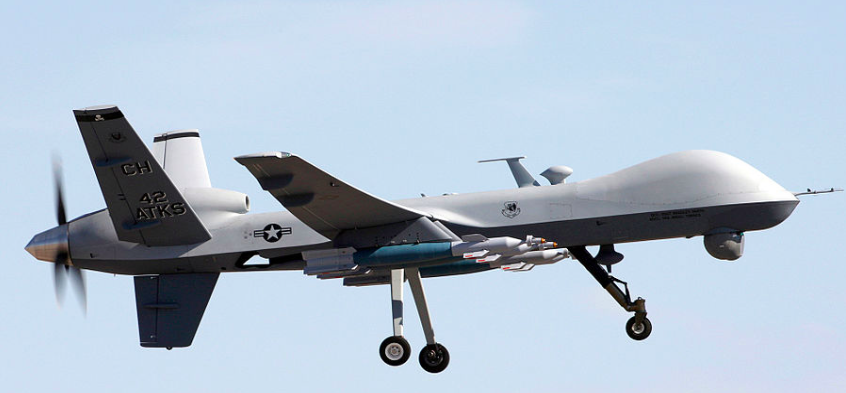Sure Drones Seem Like a Good Military Option Now, but If We Use Them, so Will Others

In Maryland in November 1917, in response to the need for poison-gas weapons on the Western Front, the U.S. Army began construction of the Edgewood Arsenal chemical-warfare complex. Military engineers began with the erection of a chemical shell-filling plant, but quickly expanded the site to manufacture phosgene and chloropicrin. Construction continued at a fevered pace through 1918, as the army built laboratories, power stations, rail yards, gas-mask factories, a mustard-gas plant, and a massive chlorine-gas factory with the highest productive capacity of any other in the world. Edgewood Arsenal became the largest centralized chemical-weapons complex of the First World War-era, built to make the United States the world leader in chemical-warfare technology.
 Over the course of World War I, Edgewood Arsenal officers became convinced that chemical weapons represented the future of warfare. After the Armistice, while public opinion was turning against chemical weapons, the U.S. Army Chemical Warfare Service worked to convince the rest of the military that chemical-warfare research and development was too important to be prohibited, restricted, or neglected. Captain E. P. H. Gempel explained the logic of a U.S. chemical-weapons program in a memorandum to the Chief of the Chemical Warfare Service. "Gas will be the greatest aid to the belligerent whose resources in gas production are greatest," he wrote, "at the signing of the Armistice in 1918 the United States was easily the leader in this respect. In view of her resources in raw material and financial power it would be to the advantage of the United States to use gas against any enemy or combination of enemies. Her vast productive capacity would insure that her troops could engage in unlimited Chemical Warfare day and night, summer and winter until the end of the war.”
Over the course of World War I, Edgewood Arsenal officers became convinced that chemical weapons represented the future of warfare. After the Armistice, while public opinion was turning against chemical weapons, the U.S. Army Chemical Warfare Service worked to convince the rest of the military that chemical-warfare research and development was too important to be prohibited, restricted, or neglected. Captain E. P. H. Gempel explained the logic of a U.S. chemical-weapons program in a memorandum to the Chief of the Chemical Warfare Service. "Gas will be the greatest aid to the belligerent whose resources in gas production are greatest," he wrote, "at the signing of the Armistice in 1918 the United States was easily the leader in this respect. In view of her resources in raw material and financial power it would be to the advantage of the United States to use gas against any enemy or combination of enemies. Her vast productive capacity would insure that her troops could engage in unlimited Chemical Warfare day and night, summer and winter until the end of the war.”
The Chemical Warfare Service of the 1920s and 30s was successful, in the short term, in garnering support for a chemical-warfare program. The army continued to fund research and development work at Edgewood Arsenal, and the U.S. Senate refused to ratify the Geneva Gas Protocol. With chemical-warfare work ongoing in the United States, other nations also researched, developed, and produced chemical weapons.
In 1924, Leon Trotsky referred to the chemical-weapons work at Edgewood Arsenal in a speech at the Bolshoi Theatre. There, he called for the creation of a robust chemical-weapons program because "the manufacture of chemicals for warfare is making great headway in the United States" and other countries. The Soviet Union eventually developed an extensive chemical-warfare infrastructure that produced the largest stockpile of chemical weapons in the world.
Germany, after the Treaty of Versailles was imposed, continued its own chemical-warfare program as part of its re-militarization efforts. When the first nerve-gas agents were discovered by an IG Farben chemist in 1936, this powerful new class of chemical weapons was further developed and manufactured by the Wehrmacht. Chemical-warfare programs were eventually established in several Middle Eastern nations, including Iraq and Syria.
Today Soviet-era chemical weapons continue to pose a danger to international security as do the weapons in Syria and other Middle Eastern countries.
What history teaches is that once they are established new military technologies tend to proliferate, and the weapons that a nation develops today may also threaten it tomorrow.